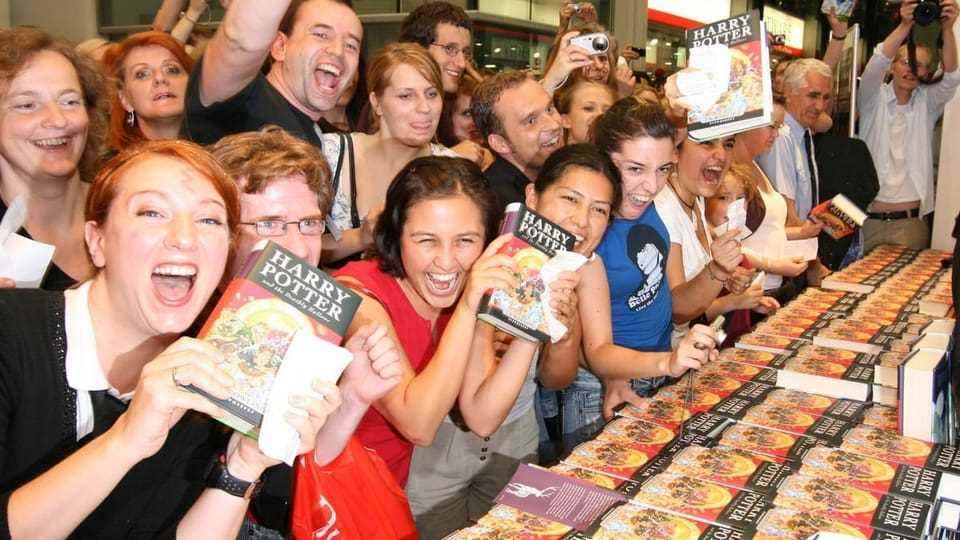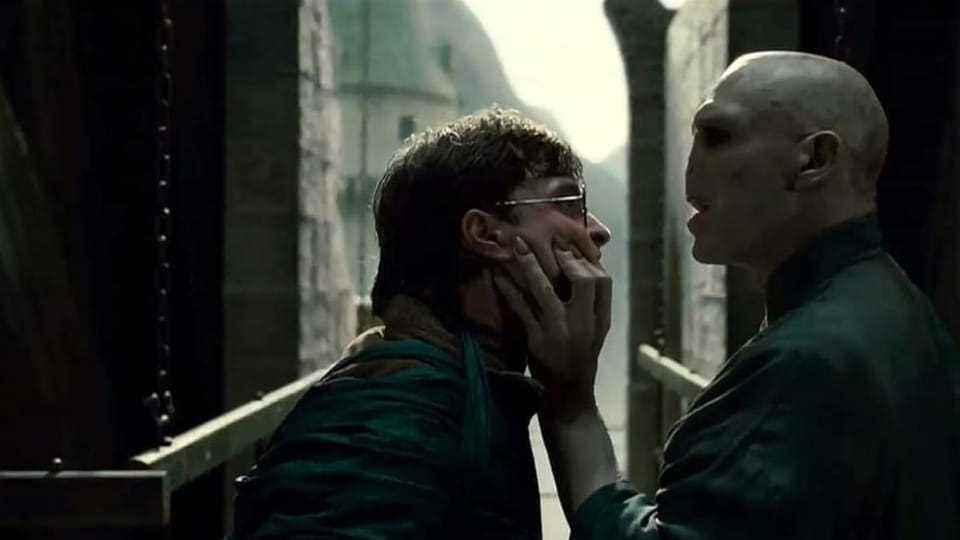contents
For exactly 25 years, the “Harry Potter” series has been turning non-readers into bookworms. The story of a success story.
«Completely unnerved, my father – as a school librarian with a bleeding heart – cut the current Harry Potter volume with a cutter knife on the spine on the campsite in Sweden. My two brothers, who until then had been rather lazy to read, were always fighting about the book. So both of them could continue reading at the same time.”
Such fan anecdotes are not uncommon since the first volume “Harry Potter and the Philosopher’s Stone” was published 25 years ago today.
What «Harry Potter» is all about
At that time there was an incomparable hype about Harry’s story. For example, a Harry Potter volume was on the New York Times bestseller list almost continuously for ten years.
No wonder, says Petra Schrackmann, librarian at the Swiss Institute for Children’s and Youth Media Sikjm and an expert on popular literature and media. She lists five factors why Harry Potter turned the book world upside down:
- The humor and the details: “Harry Potter” is a well told, exciting story peppered with a lot of British humor. Author Joanne K. Rowling has thought of every little detail and created a universe to immerse yourself in. It is so populated that everyone can find his or her favorite character.
- Clever marketing: The Potter hype would be unthinkable without the well thought-out marketing campaign, in which Rowling plays an important role from the start and is also staged as the character of the single mother who has to live in modest circumstances.
- Four in one go: Harry Potter is a combination of many different genres (fantasy, thriller, fairy tale, scary story) and at the same time tells of the everyday life of teenagers, which the readers can easily understand.
- The Internet: At the same time that Harry Potter is really taking off, the internet is coming along. Suddenly, fans around the world can network and exchange ideas.
- One for all: The story appeals to several generations. The so-called “cross-over” begins with Harry Potter: different age groups are interested in a story that was actually written for children.
Potter is unbeatable
Hardly any book from children’s and young adult literature has been able to hold a candle to the “Harry Potter” series. But many authors have tried to build on the success.
A prominent example is the five-volume fantasy series “Percy Jackson” by Rick Riordan, the first volume of which was published in 2005. It is based on the fact that the sagas of Greek mythology are real. The main protagonist is 12-year-old Perseus “Percy” Jackson, a Greek demigod.
Stephenie Meyer’s “Twilight Saga” also triggered a brief hype – as a book and film. But the hype never matched Potter’s.
Fans read to their children
Booksellers and librarians confirm what one suspects: “Harry Potter” has changed the reading scene and turned non-readers into bookworms.

Legend:
Each book triggered a rush of fans in the bookstores, such as the launch of the last book “Harry Potter and the Deathly Hallows” in 2007.
IMAGO / BRIGANI ART
Although the demand has decreased, it is still there. «Whereas 1,000 copies were sold every day at peak times, today it’s still two to three. If not daily, then definitely weekly,” says Sabine Haarmann, branch manager of Orell Füssli in the Kramhof Zurich.
Many fans who read the “Harry Potter” stories as children now read them to their own children or recommend them to read.
racism and backward role models
For many fans, “Harry Potter” means nostalgia. Nevertheless, the question arises as to how up-to-date the stories still are today. Especially in relation to socially relevant issues such as racism or sexism.

Legend:
The eternal antagonists: Harry Potter and Tom Riddle aka Lord Voldemort in the last film «Harry Potter and the Deathly Hallows».
Warner Bros. Pictures/dapd
Racism, says expert Petra Schrackmann, is central to the “Harry Potter” stories. Harry’s enemy, Lord Voldemort, has an ideology similar to that of the Third Reich. Harry fought him to the death and finally defeated him.
But in addition to this open racism, there is also structural racism: “Harry is a white, male hero. There are only a few non-white figures among the main characters,” says Schrackmann.
Petra Schrackmann observes that Harry Potter is also conservative when it comes to gender images. This is certainly also due to Rowling’s personal experiences, which according to her own statements went to a patriarchal school in England.
But there are also signs of the realization that the gender images depicted in “Harry Potter” are no longer up to date, says Schrackmann: “In Rowling’s play ‘The Cursed Child’, for example, it is said that Hermione has become ‘Minister of Magic’ is. So important, central functions will later be filled by women.”
Has become a classic
In the last 25 years, “Harry Potter” has inspired many and has become a classic. It tells the classic outsider story and addresses many timeless and sometimes existential themes: friendship, courage, love, power, fear, abuse of power, opportunism, manipulation, among others. Collectively, these themes offer a multifaceted view of the central story: the struggle of good against evil.
Harry Potter has been flying on his broomstick for 25 years – and will probably continue to do so for a long time. It has become part of the literary canon. Pippi Longstocking, Peter Pan and Pinocchio: Welcome to the Club, Harry Potter!
